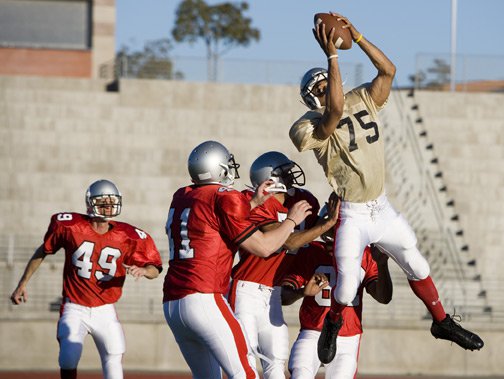Clinicians should take active role in assessing head injury detection devices
PHILADELPHIA — As the number of companies claiming to have created a device that assesses or diagnoses head injury increases, it is important to remember that the FDA has only granted 510(k) clearance to 14 such devices, a presenter at the American Academy of Neurology Annual Meeting said.
Consequently, Tanzid Shams, MD, a neurology specialist at Ballad Health in Tennessee, encouraged attendees to become active observers as more companies say they have developed these types of products.
“Here’s why we should really care. So much of the press releases and the hype around sports concussion is about the professional athlete. But that’s just the tip of the iceberg of the concussion problem," he said. "Though reports indicate about 3 million children between the ages of 5 and 18 suffer concussions annually, the actual number of concussions that occur is likely much higher.”
According to Shams, the FDA has previously stated that those who use head injury assessment or diagnosis devices that do not have the FDA’s 510(k) clearance are at risk for having their head injury misdiagnosed and/or returning to play prematurely.
He added that the products with such clearance should only be used in conjunction with a primary care physician or other trained or medical professional.

These FDA-cleared devices have five characteristics, according to Shams. They can assess biomarkers — the “holy grail” of concussion research, he said — as well as detect point of care abnormalities on electroencephalography, conduct cognitive testing, act as an infrared scanner and perform eye tracking.
“Those five tests are so complex that we, as neurologists, need to be a part of the dialogue surrounding the development of these devices,” Shams said.
“These [devices] are likely to come from industry as opposed to academic centers, therefore, we need to objectively evaluate these companies’ claims, read their publications, ask them about their science and push them to be the best scientists that they can be and create the best products they can develop.” – by Janel Miller
For more information:
FDA.gov. “Medical devices that have been cleared or approved by the FDA for assessing head injury.” https://www.fda.gov/medical-devices/neurological-devices/medical-devices-assessing-head-injury. Accessed May 7, 2019.
References:
Shams T. “Innovative technologies in assessment of sports concussion and head trauma.” Presented at: American Academy of Neurology Annual Meeting. May 4-10, 2019, Philadelphia.
Also: FDA.gov. “FDA warns public not to use unapproved or uncleared medical devices to help assess or diagnose a concussion.” https://www.fda.gov/news-events/press-announcements/fda-warns-public-not-use-unapproved-or-uncleared-medical-devices-help-assess-or-diagnose-concussion. Accessed May 7, 2019.
Disclosures: Shams reports no relevant financial disclosures.

